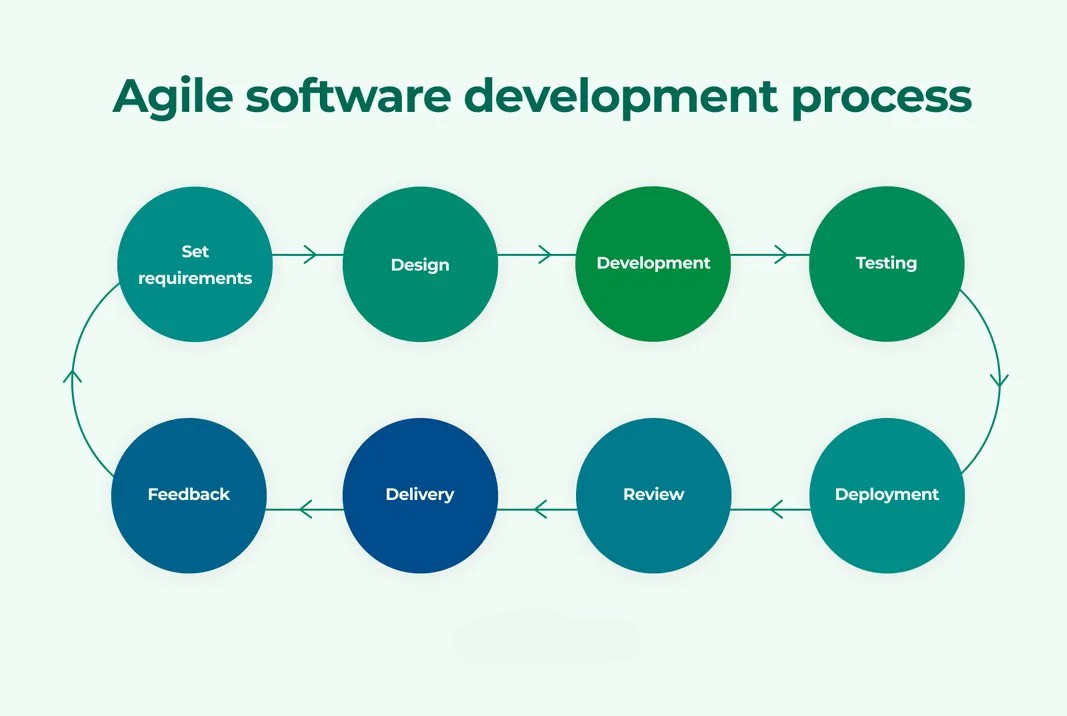
In the ever-evolving world of software development, agility is no longer a luxury—it’s a necessity. The Agile methodology has rapidly become the gold standard for teams aiming to deliver high-quality software faster, more efficiently, and with better alignment to client needs. But how does Agile truly impact productivity and project quality? In this blog, we’ll explore the transformative role Agile plays in modern software development, backed by relevant statistics and credible sources.
What Is Agile Software Development?
Agile software development is a methodology centered around iterative development, where requirements and solutions evolve through collaboration between cross-functional teams. Unlike traditional models like the Waterfall methodology, Agile emphasizes flexibility, customer feedback, and continuous improvement.
Frameworks under the Agile umbrella include Scrum, Kanban, Lean, and Extreme Programming (XP), each offering its own flavor but adhering to the core Agile principles outlined in the Agile Manifesto.
Why Agile Matters: A Quick Overview
Before diving into the specifics of productivity and quality, let’s look at why Agile has gained such popularity:
- Flexibility to Change: Agile supports adaptive planning and responds well to changing requirements.
- Customer-Centric: Continuous delivery of valuable software keeps customers engaged and satisfied.
- Collaboration-Driven: Encourages better communication and cooperation among stakeholders.
According to the 17th State of Agile Report (2023), 71% of organizations use Agile for software development, underscoring its widespread adoption and relevance across industries (State of Agile Report, 2023).
The Impact of Agile on Productivity
1. Faster Time-to-Market
One of Agile’s strongest advantages is its ability to accelerate the delivery cycle. Teams break projects into sprints (typically 2–4 weeks), focusing on small, deliverable increments. This results in faster deployment of features and quicker feedback loops.
- A survey by McKinsey found that Agile teams improved their speed to market by up to 75% (McKinsey & Company).
This rapid development cadence enables businesses to seize market opportunities faster and adapt to user needs in real-time.
2. Enhanced Team Productivity
Agile encourages regular check-ins, retrospectives, and task prioritization, ensuring teams stay focused and aligned. The use of visual tools like Kanban boards and Scrum dashboards gives teams clarity over progress and priorities.
- A report by PwC noted that Agile projects are 28% more successful than traditional ones, primarily due to improved team productivity and stakeholder engagement (PwC, 2012).
Moreover, Agile eliminates bottlenecks by encouraging regular communication and task reassignment, which reduces idle time and keeps the workflow efficient.
3. Better Resource Management
Agile promotes task estimation (via story points or hours) and capacity planning, allowing managers to allocate resources more effectively. Instead of overloading developers with tasks, Agile ensures a sustainable work pace.
The result? Reduced burnout and higher throughput—two key productivity metrics in any development team.
The Impact of Agile on Quality
1. Continuous Testing and Integration
Agile incorporates testing at every stage of development. Unlike Waterfall, where testing is usually done at the end, Agile ensures defects are caught early through continuous integration (CI) and continuous delivery (CD).
- According to VersionOne, 87% of Agile users report improved product quality as one of the top benefits of Agile (15th State of Agile Report).
With test automation tools and CI pipelines, development teams can detect bugs quickly and ensure each code release meets quality standards.
2. Regular Feedback and Iteration
Quality isn’t just about bug-free software—it’s also about building the right product. Agile promotes regular stakeholder reviews (e.g., Sprint Reviews), ensuring that features meet user expectations.
This iterative approach means that software can evolve based on user input, reducing the risk of delivering a product that fails to meet real-world needs.
3. Empowered and Accountable Teams
Agile encourages self-organizing teams that take ownership of their work. When teams feel responsible for outcomes, they are more likely to uphold high standards.
In a report by Harvard Business Review, organizations practicing Agile noted 20–30% higher employee engagement, which directly correlates with better work quality (HBR, 2020).
Real-World Case Studies
Spotify: Scaling Agile at the Enterprise Level
Spotify adopted Agile methodologies to scale its product development without sacrificing innovation. Their “Squad” model emphasizes autonomy and cross-functionality, which has helped Spotify release updates faster and improve app performance continuously.
- As a result, Spotify reports double-digit growth in development efficiency and faster feature rollouts (Spotify Engineering Culture).
Microsoft: Agile Transformation of DevOps Teams
Microsoft restructured many of its product teams around Agile principles to reduce silos and accelerate development. Using a DevOps-Agile hybrid, they saw:
- 60% improvement in time-to-deploy and
- 50% reduction in post-deployment issues
Challenges and How Agile Overcomes Them
While Agile offers multiple benefits, it’s not without challenges. Common pitfalls include lack of stakeholder buy-in, poorly defined roles, and resistance to change.
However, with proper Agile coaching and implementation of frameworks like SAFe (Scaled Agile Framework), organizations can overcome these hurdles and enjoy consistent productivity and quality improvements.
Agile and ROI: The Bigger Picture
Ultimately, Agile’s biggest impact is on the bottom line. Organizations that adopt Agile see significant ROI in terms of reduced development costs, faster delivery, and higher customer satisfaction.
- The Project Management Institute (PMI) states that Agile organizations have a 64% success rate in meeting business goals versus 49% for traditional methods (PMI Pulse of the Profession, 2020).
Higher success rates translate to better use of budgets, improved client retention, and more innovative outputs.
Final Thoughts: Is Agile Worth It?
Absolutely. Agile software development is not just a trend—it’s a proven methodology that drives significant gains in productivity and quality. With real-time collaboration, iterative development, and a focus on continuous improvement, Agile equips teams to handle the complexities of modern software development with confidence and competence.
Whether you’re a project manager, developer, or business leader, embracing Agile can be the key to unlocking your team’s full potential.
Key Takeaways
- Agile accelerates time-to-market by up to 75% (McKinsey).
- Teams using Agile see 28% higher success rates (PwC).
- Continuous testing improves software quality by catching bugs early.
- Agile organizations have a 64% success rate in achieving business goals (PMI).
- Companies like Spotify and Microsoft attribute major performance gains to Agile adoption.






